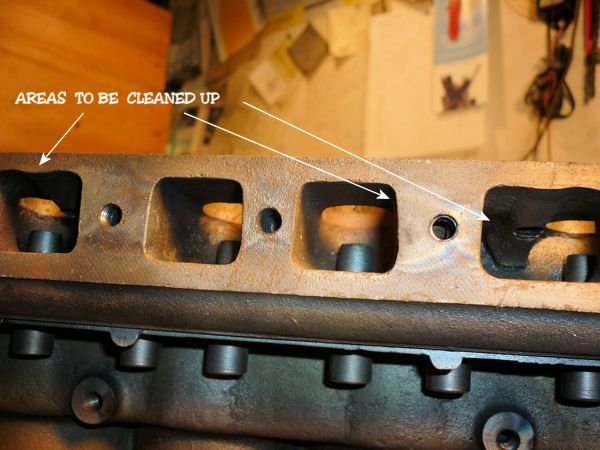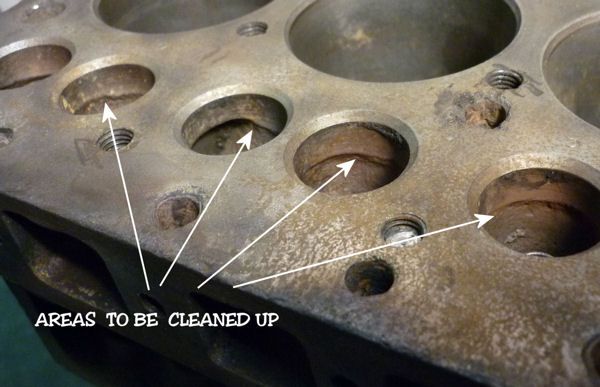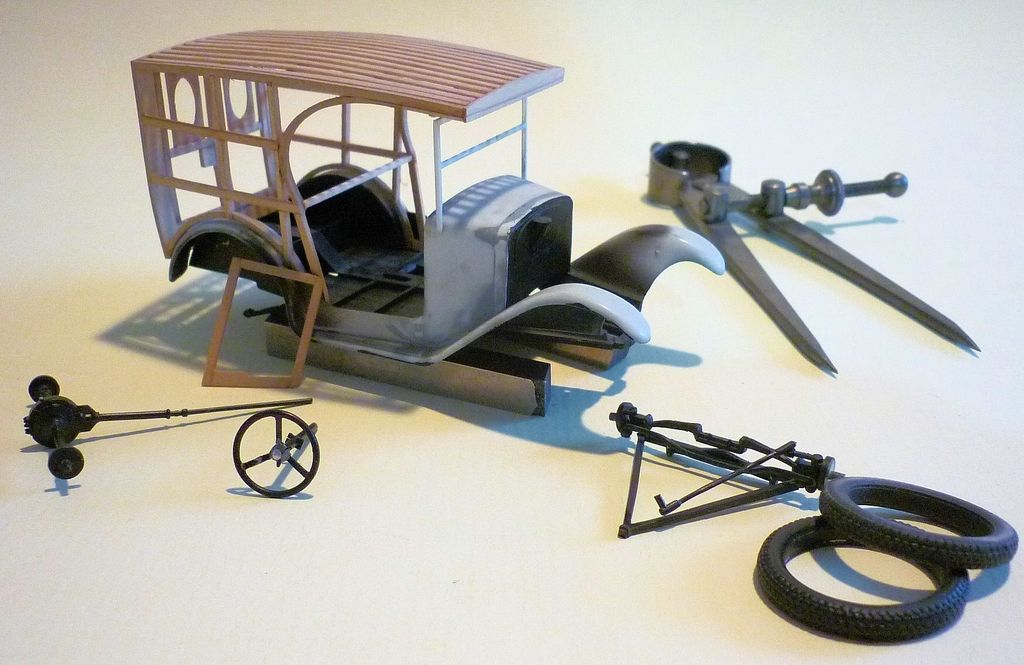
Welcome to the Austin Seven Friends web site and forum
As announced earlier, this forum with it's respective web address will go offline within the next days!
Please follow the link to our new forum
http://www.austinsevenfriends.co.uk/forum
and make sure, you readjust your link button to the new address!
Hello all,
I'm cleaning up the block in preparation for a rebuild and was wondering:
Would there be any benefits to be gained on a standard 1929 Coil engine from cleaning up the ports on the cylinder block for better gas flow in the areas indicated in the pics below?


Thanks,
Stephen
Location: Calgary Alberta Canada
Good morning Steven,
I doubt if you would notice any difference at all.Cleaning and polishing the ports is part of the complete tuning package, for a standard engine, no need leave well alone.
J
Location: As far east in Kent as you can get
Stephen,
If you're just trying to get the best out of what you've got then a little fettling of the casting and machining marks, while as John suggests won't add much in terms of oomph, will slow the onset of carbon forming which slows a negative effect. I cut the inlet valve seats (and valves) down to about 1/16" with a 60 degree cutter which can then be followed down the top, machined part, of the inlet area. Then blend that taking out the step where the four arrows are in your second photo. Radius out the seat on the short side taking away the sharp corner. One advantage of fitting oversize inlet valves is that the seat cutting and blending does clean up these lumps and bumps. It probably doesn't make much difference in performance terms but we enjoy the activity.
But before you do that, I would suggest that your guides protrude too far into the port and present an obstruction. Are they too long or just knocked through too far? Protruding about 1/8" into the port feels about right with a chamfer on the top.
Andy Cook has done flow bench measurements on A7 ports, he may come in on this?
Dave
If it was me I would just open the inlet throats about .040" and radius off the sharp edge on the manifold side.
Skim the top of the block to clean up.Skim the head .040-.060" and get a set of reprofiled cam followers 3/4" radius,these will give a useful improvement on their own. Should you fit these followers you need to machine the bronze tappet guides down in the valve chest area otherwise you might not be able to set the tappets properly.
Basically, I just want to clean up the uneven transitions and general roughness of the areas shown, and perhaps match the port shapes to the manifold or what is called "blue printing" here in North America.
I don't want to modify the block in any way just smooth things so that carbon has a harder time of developing etc. or "blending the lumps and bumps " as Dave mentioned.
The guides are the earlier type that have the base collar on them so they are stock in size and position.
Just looking to make it run sweetly when done. 
Location: Calgary Alberta Canada
Stephen, as already suggested any smoothing will help in the prevention of carbon build up. I would add to that.The joint between manifolds and block should be matched.Using a manifold gasket match the block and manifolds to it by opening both to the gasket.Small adjustments can make quite a difference.
Location: Piddle Valley
I'm new to Sevens so can't comment specifically, but did some porting(both two stroke and four stroke bikes) and Minis. Without taking much meat out and reshaping, it is possible to improve flow by cleaning the passages up with a die grinder like a Dumore or similar. Theories may have changed in the thirty...oops forty years since I did this sort of thing. Matching the manifolds to the ports is important, as well as the gaskets. The other trick we used to do was to not grind to a fine polish, but to leave some scratching at right angles to the flow, to create what we called laminar flow, though that term is usually applied to fluids. Anyway, the idea is to reduce friction and small consistent eddies allow less friction than a polished surface. At least that's what the theory was and I used it racing sailboats as well. Gains were never big, but on low powered motors, a mile an hour on the straight was sometimes enough to make a difference.
Location: Seattle, Washington, USA
Thanks for your input Eric.
I've done this type of work before on two strokes and BMC A series engines where there has been some accurate information to go on to determine what needs to be done to get a desired result.
Unfortunately in this case I am not familiar with what I can do to clean up the porting without compromising the performance it should have in a standard stock state.
If those in the know think that it would be best to leave things as is then I'll not touch the block and leave it as made.
Cheers,
Stephen
Location: Calgary Alberta Canada
Hi Stephen, I'll let others respond regarding how much to take off. However, I would think that matching manifolds and gaskets to the ports, without removing much material would be beneficial. I can see that the ports are not symmetrical. You won't be doing much, but you would be reducing turbulence and increasing flow. The former is good for a combustion chamber, but slow in the passages into and out of the chamber. I wouldn't much call this porting but just cleaning up casting flash and that sort of thing. Like blue printing, matching weights of pistons and rods, always gave a bit more power, without actually changing engine dynamics. Sort of like Vincent motors, the Rapide was not as balanced as the Shadow though their tuning was not very different. Better balance means less friction, more power and ultimately more longevity at high RPM. Its what made my Aermacchi motor spin to 9,000 without sending out the rod.
Location: Seattle, Washington, USA

